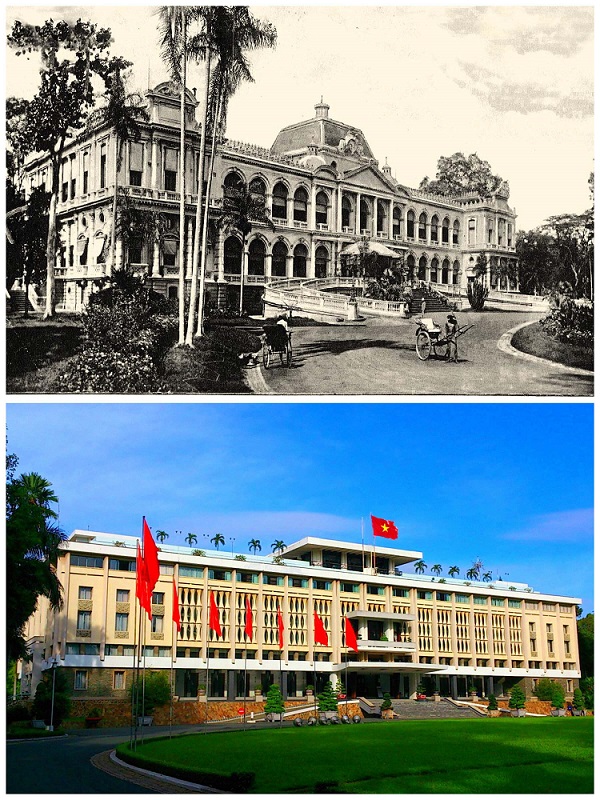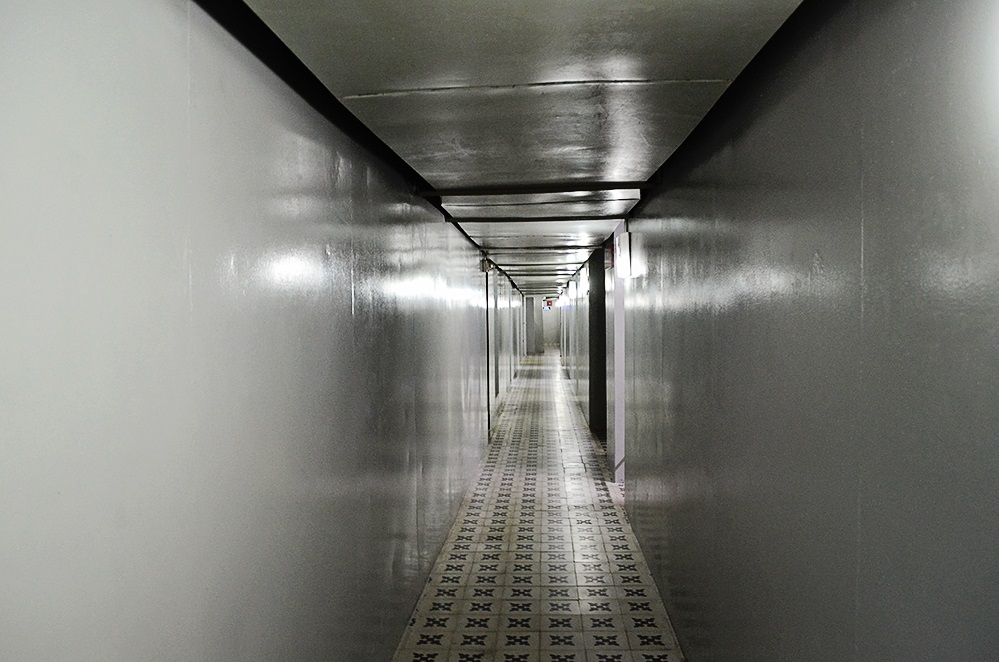Stories of “secret history” about Gia Long Palace and Independence Palace-Tourism
With the original documents carefully processed, compared and compared in different angles, author Ly Nhan Phan Thu Lang has provided a lot of little-known information about the Independence Palace and Gia Long Palace, especially the apartments. cellar here.
The Independence Palace (now the Reunification Hall) and Gia Long Palace (now Ho Chi Minh City Museum) are massive architectural edifices preserving a part of Saigon’s history. These are also famous tourist destinations attracting many domestic and foreign tourists to visit. In addition, it is also the place where many major events of Ho Chi Minh City and the country take place.
Learn and explore the Independence Palace and Gia Long Palace, we have many valuable historical documents. In addition, there are anecdotes and stories that are considered “secret history” that make us more curious when it comes to these two mansions, including stories about the mysterious basements here.

In the book “Glorious Saigon”, with original documents carefully processed, compared and compared from different angles, author Ly Nhan Phan Thu Lang provided a lot of little-known information about the Independence Palace and the Independence Palace. Gia Long and especially the secret basements of these two mansions.
According to Ly Nhan Phan Thu Lang, the Independence Palace (now the Reunification Hall) was originally the headquarters of two high-ranking French officials, so it was called the Governor-General’s Palace and the General’s Palace. The French called it Palais Norodom, after a Cambodian king who recognized the French protectorate in Cambodia in 1863.
This work was designed by famous French architect Hermit and was started on February 23, 1863. After 12 years of construction, costing 4 million francs, it was inaugurated in early 1875.
On September 7, 1954, Ngo Dinh Diem took over Norodom Palace and changed its name to Independence Palace.
On February 27, 1962, the Palace was bombed, Ngo Dinh Diem had to move the Presidential Palace to Gia Long Palace while waiting for the construction of a completely new palace.
Diem assigned architect Ngo Viet Thu to draw a project to build a new palace in a modern style. Construction work began on July 1, 1962, on November 1, 1963, Diem was couped up by generals. After that event, the Palace continued to be built and on October 31, 1966 was inaugurated. After April 30, 1975, the Independence Palace was renamed the Reunification Hall.

Gia Long Palace was built by the French from 1885 to 1890 when it was completed. Designed by French architect Alfred Foulhoux. Originally, it was intended to be used as a display of colonial economic products, but Governor Le Myre de Vilers decided to make it a place to live and work. That’s why it’s called the Governor’s Palace.
The palace is located on Gouverneur street, later renamed La Grandière. In April 1950, it was renamed Gia Long Street, so Saigon people used to call it Gia Long Palace. In 1954, when he became President, Ngo Dinh Diem thought of the prospect of a coup, so he ordered a solid bomb shelter to be built.

The construction of the Gia Long Palace tunnel was initially estimated at 15 million VND. Construction responsibility is assigned to the Ministry of Public Works and not to bidding. The basement was set up in the rear area of the palace, where the garden is located, located along the current Le Thanh Ton street. The tunnel was dug 4m below the ground and occupied the garden behind the palace. The tunnel is built with very solid reinforced cement. Heavy artillery and bombs up to 250kg.
The cellar has 4 doors, all made of monolithic cast iron. To open the hatch, one must use the rudder system to rotate. There is also a large iron bolt inside.
The ground above the hatch cover is camouflaged with potted plants. The basement also has stairs leading to Mr. Diem’s office. At any time, just 5 seconds when there is an alarm signal, Mr. Diem can run to the stairs to go down to the basement.
The tunnel was also equipped with a radio and was also planned to install an air conditioner and a separate generator, but before it could be done, a coup occurred on November 1, 1963.
Ly Nhan Phan Thu Lang said that at this time, Diem, Nhu and a few bodyguard officers had run into the basement. After that, the two people got into the car driven by Cao Xuan Vy, followed the gate on Pasteur Street and drove back to Cho Lon.
At first, Diem and Nhu hid at the house of State Chief Ma Tuyen, then went to Cha Tam Church at the end of Nguyen Trai Street to wait for the coup troops to bring them back to negotiate. However, both were killed on the way back to the Saigon General Staff.
After November 1, 1963, many newspapers in Saigon wrote about the secret cellar in Gia Long Palace with many things embroidered. They even wrote that the tunnel was 3m deep in the ground, regardless of people, vehicles could move freely. Then the bunker opened to the banks of the Thu Thiem River to enter the naval camp. Now, there is a tunnel that connects to Cho Lon, to the house of Governor Ma Tuyen. Therefore, Diem and Nhu went to Ma Tuyen’s house safely without anyone knowing. Many naive people believed but the above is true.

According to Ly Nhan Phan Thu Lang, the Independence Palace also dug a large and solid basement no less than the one in Gia Long Palace. There is an elevator from upstairs running down to the basement, with full electricity and water, air conditioner, kitchen.
They also designed a sliding staircase from the President’s office running straight down to the basement. However, the tunnel does not have a way to the outside as many people think. The hatch was just wide enough for an armored vehicle to enter, and then the person sheltering in the cellar got in the car and drove off at will.
at Blogtuan.info – Source: 24h.com.vn – Read the original article here



